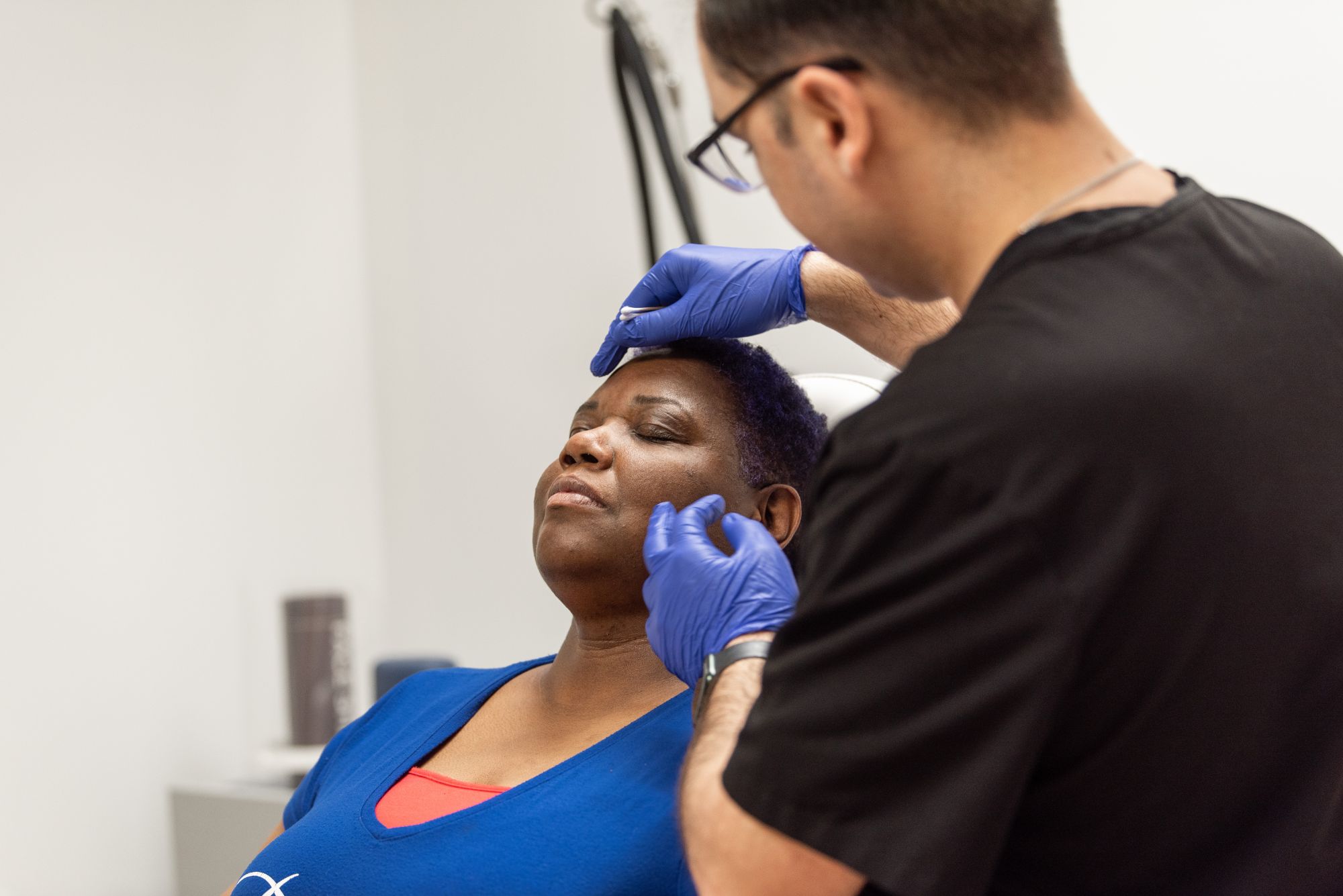Get Smoother, Firmer,
More Radiant Skin
Reduce fine lines and wrinkles, diminish scars and hyperpigmentation, reduce pore size, and reverse the overall signs of aging on your face with microneedling at Chicago Skin Clinic.
Dr. Danilo Del Campo and Dr. Danny Del Campo are experts in this non-invasive, effective procedure, which uses controlled micro-injuries to your skin to stimulate collagen production and trigger your body’s natural healing response.
You get a smoother, more radiant complexion — without the downtime or discomfort of more aggressive treatments.
Microneedling With Collagen P.I.N.
Chicago Skin Clinic uses Collagen P.I.N. for microneedling. Collagen P.I.N., an FDA-cleared microneedling device, is meticulously crafted to rejuvenate skin tissue with its cutting-edge 36-PIN needle system.
With precise control and exceptional treatment outcomes, this technology offers an unparalleled experience for both microneedling practitioners and patients like you at Chicago Skin Clinic.
By creating micro-injuries to the skin, Collagen P.I.N. stimulates your body's innate healing response, leading to remarkable visible improvements in the treated area.
With Collagen P.I.N. at Chicago Skin Clinic, you can unlock revitalize your appearance and unlock more radiant, youthful-looking skin.
How Is Microneedling Performed?
Your dermatologist will apply a topical serum to clean skin (such as hyaluronic acid) to glide the microneedling device across the skin’s surface while creating thousands of micro-channels every second. This helps stimulate the skin’s own natural healing process, while simultaneously delivering Hyaluronic Acid (HA) – the building blocks for healthy new skin.
Dr. Danilo Del Campo and Dr. Danny Del Campo will select the appropriate needle depth and number of passes required to properly treat your concerns based on your individual skin health and skin regimen.
How Does Microneedling Work?
Microneedling creates microchannels, which are controlled injuries on the skin. This procedure stimulates collagen and elastin production, leaving skin thicker and plumper.
Microneedling also activates cellular regeneration to help tighten and lift skin while minimizing common skin problems such as:
- Acne scars
- Fine lines
- Photo-aging
- Dull skin
- Poor texture
- Stretch marks
- Body scars
- Hair restoration
Topical products are then able to absorb and penetrate much more effectively.
How Many Treatments Are Needed?
Typically a series of three to four treatments is recommended, depending on your area of correction or concern. Dr. Del Campo and Dr. Danny will ultimately determine a treatment schedule based on your individual goals and desires.
Treatments are usually spaced in four-week intervals. Patients with deep wrinkles, advanced sun damage, stretch marks, or any type of scars usually require 3+ treatments to achieve the desired results.
Does Microneedling Hurt?
Most patients say they feel no pain and only a tingling sensation. Chicago Skin Clinic uses an effective topical anesthesia before the microneedling so that you’ll feel comfortable throughout the procedure.

Is Microneedling the Right Choice for You?
Microneedling can be beneficial for all skin types to target fine lines, wrinkles, acne scarring, and pigmentation. At Chicago Skin Clinic, we can perform microneedling on your face, neck, and body. You’ll experience minimal downtime, and in only a few days, you’ll be on your way to healthy, happy skin.
Scheduling a consultation with Dr. Danny Del Campo or Dr. Danilo V. Del Campo can help determine if microneedling is the best option to fit your needs and goals.
Schedule a Consultation to See If Microneedling Is Right for You
If you’re interested in microneedling, contact our Chicago office today. We’ll discuss your goals and evaluate your skin to determine the best possible cosmetic plan for you.
 SCHEDULE NOW
SCHEDULE NOW